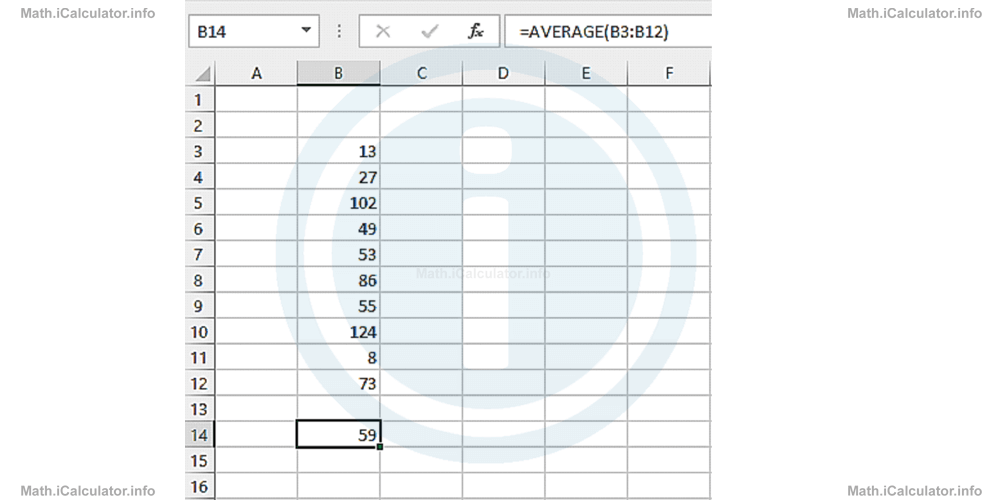Menu
Math Lesson 8.1.3 - Expressing Events in a Shorter Way using Formulas
Please provide a rating, it takes seconds and helps us to keep this resource free for all to use
Welcome to our Math lesson on Expressing Events in a Shorter Way using Formulas, this is the third lesson of our suite of math lessons covering the topic of Writing Formulas and Substituting in a Formula, you can find links to the other lessons within this tutorial and access additional Math learning resources below this lesson.
Expressing Events in a Shorter Way using Formulas
We don't just use formulas to express scientific phenomena, they are also used to describe daily activities in a shorter way, especially when these activities are recurring and have the same routine. You may have used spreadsheets (like Microsoft Excel) to express a number of events involving the same variables in different situations. Thus, after writing the formula, you simply insert the input values and as a result, the output values appear automatically in the in the designated cells as shown in the figure below, where the average of all input values is calculated through the corresponding formula.

Thus, instead of adding all values manually and dividing them by the number of values to calculate the average, we simply insert the input values in different cells (here from B3 to B12) and by means of the formula of average shown in the top-right part of the figure, we calculate the average of the given numbers (here 59, shown in the cell B14) with just a click.
Indeed, if we add all numbers manually, the sum is 590. Since there are 10 numbers in total, the average is 59 (590 ÷ 10). However, the formula method is more suitable as we simply replace all input values with others to obtain the average without having to add them manually.
Likewise, many companies use formulas to calculate the cost of services they provide to customers. This saves a lot of precious time for employees who deal with customers. For example, if the cost of a drink in a restaurant table is D = $2.5 and the place reservation per person costs R = $6, the bill B is calculated by the formula
or more specifically,
where n is the number of drinks a person orders. In this scenario, we have assumed that all customers have ordered the same number of drinks. In this way, the waiter has to insert only the number of customers N in the restaurant table and the number of drinks per person n to calculate the bill.
Example 3
Matt has £4,700 savings in the bank. He gets a job and is paid £12 for every hour he works. Assuming he spends nothing, write a formula for the amount of money (£M) Matt will have after he has worked for h hours.
Solution 3
The amount of money Matt will have after working for h hours in the new job will add to his savings to give the total amount he will have. Thus, we can write
When written in symbols, this relation becomes
On the other hand, when written as a formula, the above relation becomes
where M is the total amount of money Matt will have after h hours.
More Writing Formulas and Substituting in a Formula Lessons and Learning Resources
Whats next?
Enjoy the "Expressing Events in a Shorter Way using Formulas" math lesson? People who liked the "Writing Formulas and Substituting in a Formula lesson found the following resources useful:
- Expression Feedback. Helps other - Leave a rating for this expression (see below)
- Formulas Math tutorial: Writing Formulas and Substituting in a Formula. Read the Writing Formulas and Substituting in a Formula math tutorial and build your math knowledge of Formulas
- Formulas Video tutorial: Writing Formulas and Substituting in a Formula. Watch or listen to the Writing Formulas and Substituting in a Formula video tutorial, a useful way to help you revise when travelling to and from school/college
- Formulas Revision Notes: Writing Formulas and Substituting in a Formula. Print the notes so you can revise the key points covered in the math tutorial for Writing Formulas and Substituting in a Formula
- Formulas Practice Questions: Writing Formulas and Substituting in a Formula. Test and improve your knowledge of Writing Formulas and Substituting in a Formula with example questins and answers
- Check your calculations for Formulas questions with our excellent Formulas calculators which contain full equations and calculations clearly displayed line by line. See the Formulas Calculators by iCalculator™ below.
- Continuing learning formulas - read our next math tutorial: Types of Formulas. Rearranging Formulas
Help others Learning Math just like you
Please provide a rating, it takes seconds and helps us to keep this resource free for all to use
We hope you found this Math tutorial "Writing Formulas and Substituting in a Formula" useful. If you did it would be great if you could spare the time to rate this math tutorial (simply click on the number of stars that match your assessment of this math learning aide) and/or share on social media, this helps us identify popular tutorials and calculators and expand our free learning resources to support our users around the world have free access to expand their knowledge of math and other disciplines.